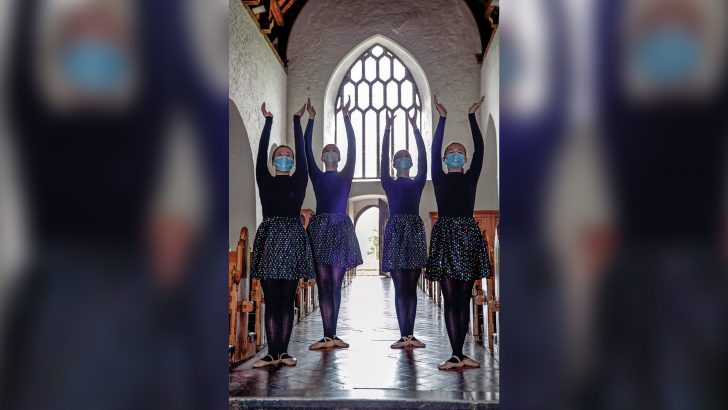The View
Lack of time prevents me from doing as many talks as I once did (not to mention a worldwide pandemic.) I am not quite sure why I accepted an invitation to speak at the recent Holycross Abbey Novena but I am so glad I did.
I was vaguely aware of Holycross Abbey but honestly, had no idea of how rich its history is. It is an inspiring story with particular relevance to our situation today. The short version is that in 1182, King Donal Mor O’Brien, endowed an already existing monastery or hermitage following the Celtic monastic rule with large tracts of land. From then on, it would be a Cistercian Abbey, following the Rule of St Benedict.
The abbey was not without difficulties even in its earliest centuries and at times, its survival even seemed in doubt.
New patron
The Norman settlers provided a new patron, James Butler, fourth Earl of Ormond. An ambitious scheme of rebuilding commenced, including inserting the great east and west windows, which are such a glorious feature.
Within a century, the greed of Henry VIII meant that the monasteries were suppressed. A clever stratagem preserved Holycross for a while. In 1534, the Abbot, William Dwyer, resigned his office in favour of a married layman, Philip Purcell, which meant that Holycross became a provostry rather than a Cistercian abbey.
Sadly, by 1685, a shortage of vocations left the abbey with an abbot and one monk. With the death of Fr Edmond Cormack in 1735, the Cistercian link was broken and from 1740, people began to bury their dead within the abbey.
As the visitor leaflet says, “For three hundred years before its last restoration, the abbey was roofless and silent.”
Now the story takes an extraordinary turn, described in an absorbing account by one of the people most central to the story – Fr William Hayes, who was appointed as curate in 1966 and then as administrator.
Like many other important ecclesiastical buildings, the abbey was in the care of the State and was not to be used for worship, although permission to celebrate Mass there for Michelmas in 1967 was readily granted. Fr Hayes was concerned about the damage rain was doing to the fine architectural features of the church and proposed to the Office of Public Works in 1967 that the building, then in danger of dereliction, be re-roofed with slates.
Astonishment
To his astonishment, the OPW representative at the meeting threw out the suggestion that the abbey be restored for use as the parish church.
Can you imagine that happening today? Firstly, it would have to be re-granted from the State to the parish. Secondly, this was the late 1960s, when emigration was high and money was far from plentiful.
A somewhat stunned Fr Hayes brought the proposal back to Archbishop Tom Morris who was most enthusiastic about the plan.
God’s grace is evident in the restoration. Local families had been burying their dead in the Abbey for generations. All it would have needed was one family to refuse to allow the remains to be re-buried and the plan could have been derailed. All the families agreed to the exhumation.
The chapter in Fr Hayes’ book describing the archaeological excavation and re-interment is very moving, as one burial had only taken place three years before.
The legal hurdles were also overcome, with the legislation proposing the restoration of Holycross Abbey as a building for worship being passed unanimously. Again, can you imagine that happening today?
Long story short, after extraordinary efforts and fundraising, Holycross Abbey, which gets its name from having not one, but two relics of the true cross, was officially re-opened on October 5, 1975.
It was a ceremonial Church-State event, including the president, Cearbhall Ó Dálaigh, Cardinal Timothy Manning of Los Angeles, Cistercian monks, many of the Irish hierarchy and representatives of the Church of Ireland.
Holycross Abbey remains a magnificent parish church and a jewel in the crown of Cashel and Emly Archdiocese. Fittingly, the diocesan pastoral plan, Seeds of Hope, was launched there in mid-September by Archbishop Kieran O’Reilly, again under the health and safety restrictions necessary during this pandemic.
Space
Standing in this beautiful, serene space, with Fr Celsus Tierney, PP, pointing out fascinating details, it was clear to me that faith in God can accomplish wonders. We all feel battered after the pandemic, which has taken lives and livelihoods.
Yet standing there, the light streaming through the great windows, it was a reminder that God is in charge and all we have to do is cooperate with his grace.
The abbey has risen from a desolate ruin to a living space of worship. Sure, this year, the novena was online but the Church can, with God’s help and our cooperation, also rise again. Holycross provides us with both a historical perspective and contemporary inspiration.


 Breda O'Brien
Breda O'Brien Pictured (l-r) Mairead Collins, Kate O’Hora, Anna Flynn and Eve Ryan Dundon of Presentation
Secondary School, Thurles performing a dance of celebration at the recent launch of Seeds of Hope in
Holycross Abbey. Photo: Arthur Ellis
Pictured (l-r) Mairead Collins, Kate O’Hora, Anna Flynn and Eve Ryan Dundon of Presentation
Secondary School, Thurles performing a dance of celebration at the recent launch of Seeds of Hope in
Holycross Abbey. Photo: Arthur Ellis 